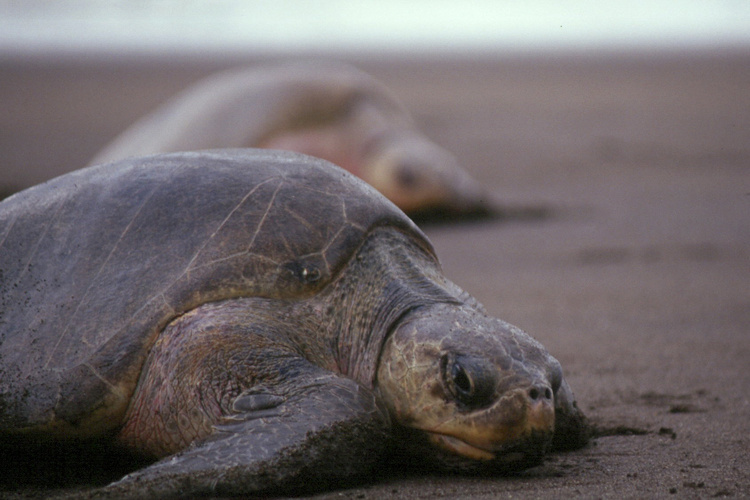Sea Turtles
Leatherback (Dermochelys coriacea)
The leatherback turtle is the largest of all sea turtles and one of the largest reptiles on earth. It ranges form 4-8 feet in length (1.2 – 2.4 meters) and weighs between 500-2,000 pounds (225-900kg). The average adult leatherback measures between 5-6 feet (1.5-1.8 meters) and weighs 600-800 pounds (270-360kg). It is the oldest of all sea turtle species and has been around for more than 150 million years. It has survived and thrived until the last several decades where human interactions has taken a major toll on their numbers. The leatherbacks can be found throughout the Pacific, Atlantic and Indian Oceans. In the Pacific, their range extends as far north as Alaska to southern parts of New Zealand. In the Atlantic, they can be found as far north as Norway and the Arctic Circle and south to the tip of Africa. They are mainly open ocean wanderers but they tend to migrate to tropical regions, such as Trinidad, and subtropical coastal regions to mate and nest.
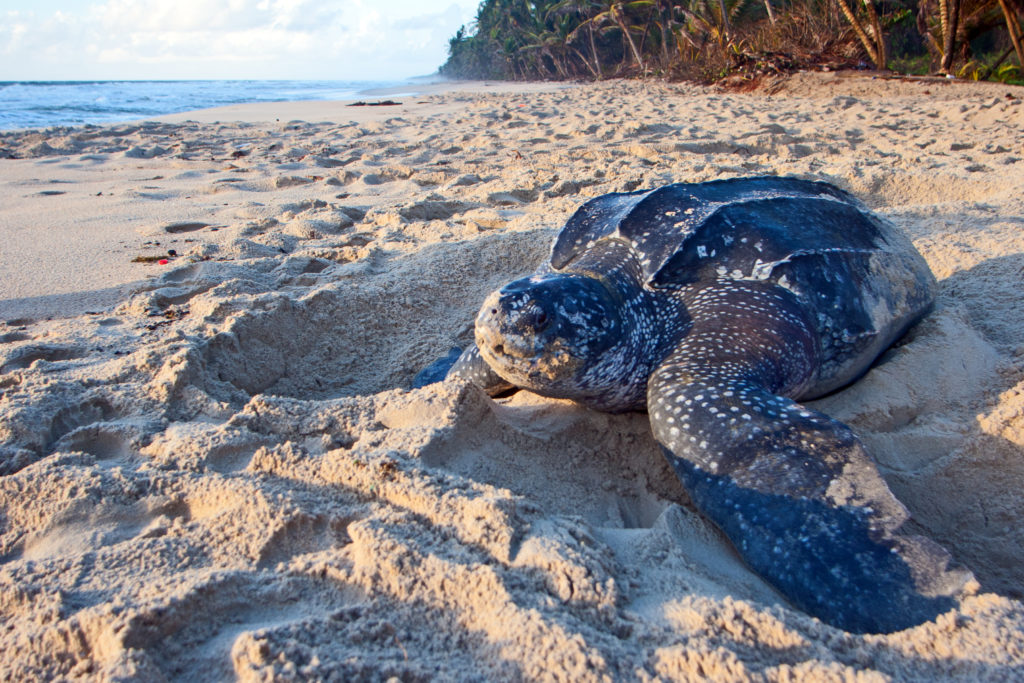
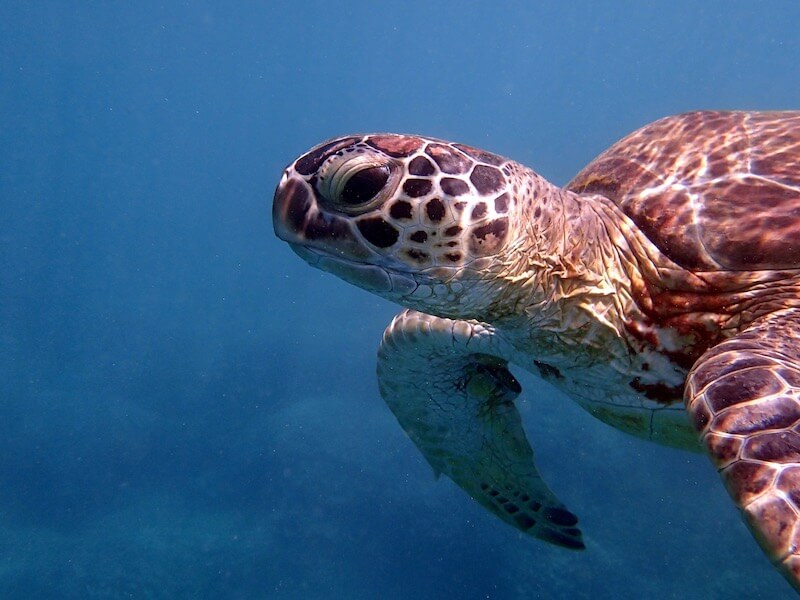
Green (Chelonia mydas)
The green turtle is the second largest after the leatherback that weighs up to 500 pounds (225 kg) and reaches four feet (1.2 meters) in length. The adult is an herbivore which dines on many forms of marine plant life. Their beak is sharp, jagged and saw-like, perfectly adapted for grazing in sea-grass beds and scraping algae off of hard surfaces. This species can be found in the sub-tropics and tropics worldwide, with major nesting beaches in Tortuguero (Costa Rica), Oman, Florida, Raine Island (Australia), French Frigate Shoals in the North-western Hawaiian Islands, Guam, American Samoa, Suriname, Georgia, South Carolina, North Carolina, Puerto Rico, Trinidad and the US Virgin Islands. These are often seen around Seagrass beds and Coral reefs by divers right her in Trinidad and Tobago.
Loggerhead (Caretta caretta)
Most of the loggerhead species is found in the US and so named because of their large heads and strong crushing jaw which enables them to eat hard-shelled prey such as crabs, conchs and whelks. The loggerhead is one of the larger species of sea turtles ranges from 200-400 pounds (90-180 kg) and up 4 feet in length (1.2 meters). Loggerheads are found in every ocean around the world but their largest concentration of nesting occurs on Masirah Island off the coast of Oman in the Middle East. In the Pacific, their main nesting grounds include Japan and Australia. In the Atlantic the main concentration occurs in Florida. They are the most common species in the Mediterranean, nesting on beaches in Greece, Turkey and Israel.
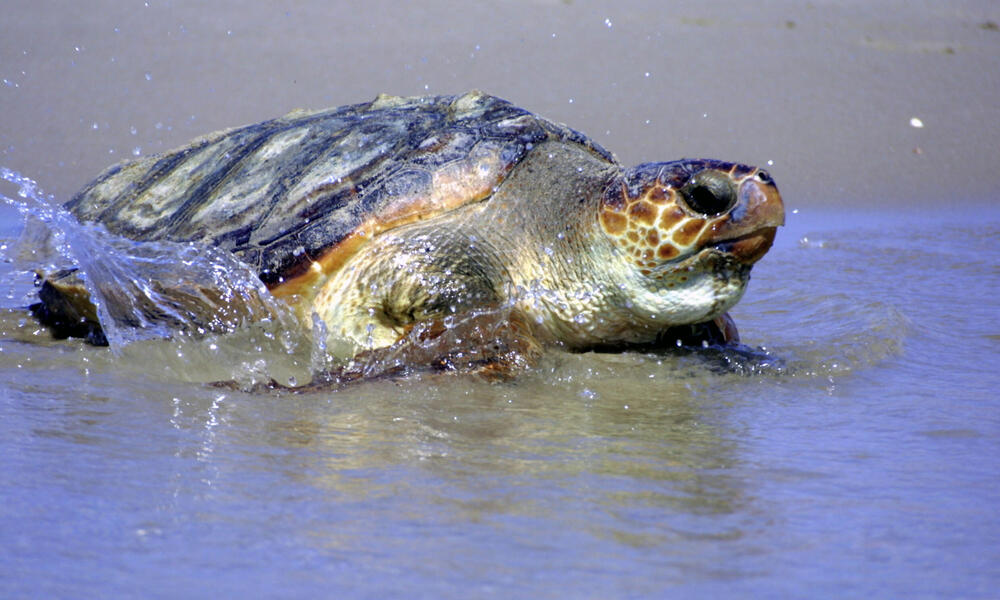
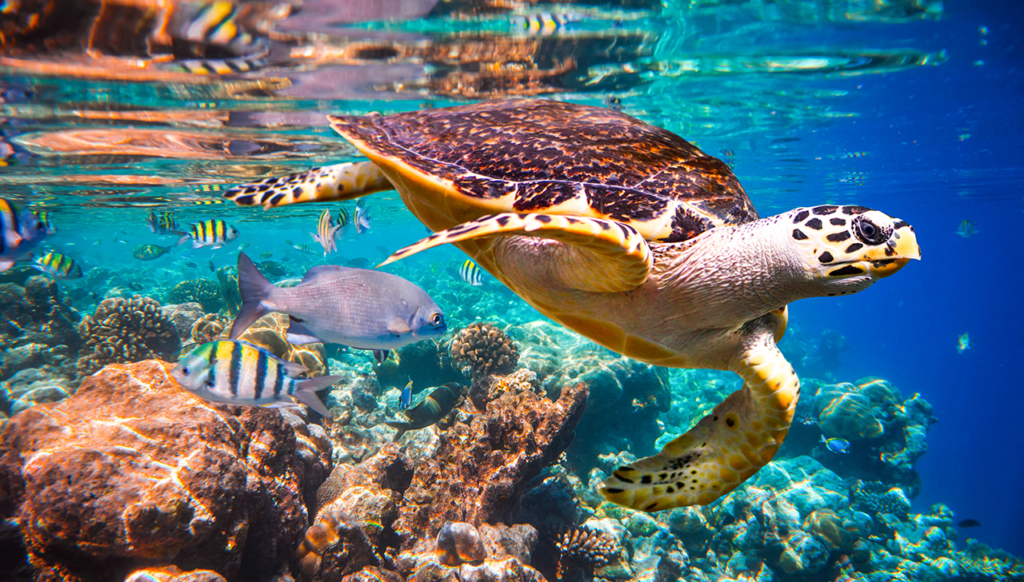
Hawksbill (Eretmochelys imbricata)
The hawksbill is considered to be the most beautiful of sea turtles for their colourful shells, the hawksbill is found in tropical waters around the world. Their diet is very specialized, feeding almost exclusively on sponges and because of this, they spend their time in coral reefs, rocky areas, lagoons, mangroves, oceanic islands, and shallow coastal areas. Named for its narrow head and sharp, bird-like beak, hawksbills can reach into cracks and crevices of coral reefs looking for food. One of the smaller turtles, adults weigh between 100-200 pounds (45-90 kg) and reach 2-3 feet (roughly 0.5 to 1 meter) in length. The species inhabits tropical and some sub-tropical regions in the Atlantic, Pacific, and Indian Oceans. The largest population of this species is in the Caribbean Sea, the Seychelles, Indonesia, Mexico, and Australia whereas none are found Mediterranean and a handful nest in Florida each year.
Olive Ridley (Lepidochelys olivacea)
The olive ridley weighs between 75-100 pounds (34-45 kg) and reaches 2-2.5 feet (roughly 0.6 meters) in length. They are called the Olive Ridley because of their pale green carapace or shell. They nest in masses also referred to as arribadas and during arribadas, thousands of females nest over the course of a few weeks. Adults reach sexual maturity around the age of 15 years. They can be found globally but primarily in tropical regions of the Pacific, Indian and Southern Atlantic Oceans. Although they primarily seek open sea life, they nest on bays and estuaries Mexico, Nicaragua, Costa Rica, Panama, Australia, parts of Africa, and a few beaches along the coast of India. Worldwide, they nest in approximately 40 countries.
